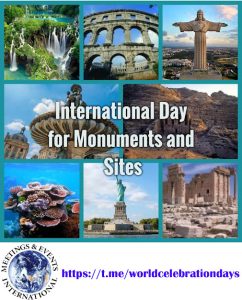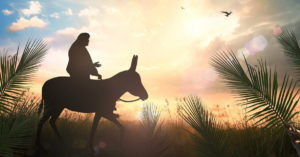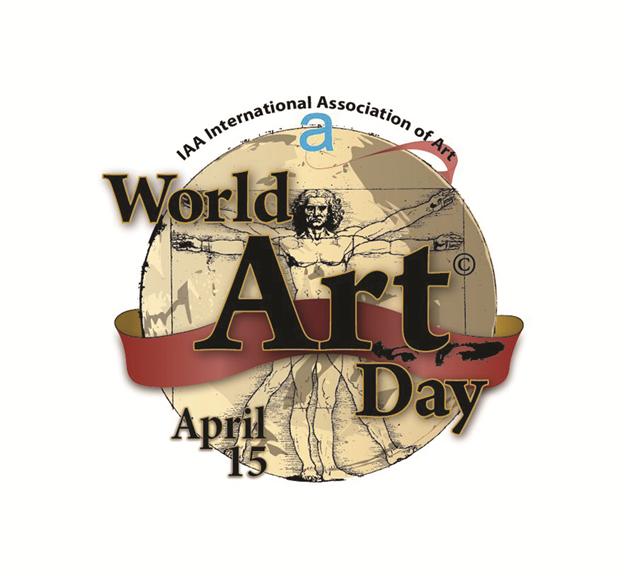 Every day people all over the world celebrate their cultural heritage, simply by living their lives in a way that embodies who they are and where they came from. But one day a year is set aside to celebrate the joint history and heritage of the human race. World Heritage Day encourages us to celebrate all the world’s cultures, and to bring awareness to important cultural monuments and sites, and to espouse the importance of preserving the world’s cultures.
Every day people all over the world celebrate their cultural heritage, simply by living their lives in a way that embodies who they are and where they came from. But one day a year is set aside to celebrate the joint history and heritage of the human race. World Heritage Day encourages us to celebrate all the world’s cultures, and to bring awareness to important cultural monuments and sites, and to espouse the importance of preserving the world’s cultures.
Learn about World Heritage Day
World Heritage Day, which is also known as the International Monuments and Sites Day, celebrates the work carried out by the ICOMOS – International Council on Monuments and Sites. The day is all about increasing the awareness of the importance of the diversity of cultural heritage and preserving it for generations in the future. Ancient monuments and buildings are an asset to us all around the world. However, they need to be protected to ensure that they continue to be an asset for years and years to come. Therefore, the day is a collective effort of communities around the globe.
On this day, there are a number of different events that happen all over the world. This includes a wide range of activities, conferences, and visits to heritage sites and monuments. For those who are unaware, a heritage site is basically a place that is of cultural significance. It preserves the legacy of intangible attributes and physical artifacts of a society or group that is inherited from previous generations.
There are truly some incredible heritage sites and monuments around the world. This includes the Machu Picchu, which is situated in the lush and mountainous terrain high above the Urubamba River in Peru. There are lots of amazing sights in Egypt, and the Pyramids of Giza are one of them. Other places of note include Bagan in Myanmar, Angkor Wat in Cambodia, and the Great Wall of China.
History Of World Heritage Day
So the first (and possibly most confusing?) part of World Heritage Day is that that actually isn’t its name – it’s a formal name. What is popularly known as World Heritage Day is actually called The International Day for Monument and Sites and was established in 1982 by the International Council for Monuments and Sites, or ICOMOS. This organization was established on the principles set forth in the Venice Charter, otherwise known as the 1964 International Charter on the Conservation and Restoration of Monuments and Sites.
The organization was founded after a need was identified to protect these valued locations, and it saw the coming together of experts from hundreds of related fields. These include architects, engineers, geographers, civil engineers, and artists and archaeologists. Each year they work to help ensure that some of the world’s most beautiful sites and important cultural monuments remain preserved for future generations.
Since it’s inception it has grown to include almost 10,000 members in over 150 countries all over the world. Of these 10,000 members over 400 are members from institutions, national committees, and international scientific committees, all working together to save important sites and identify new ones that need to be added to the watch list.
2016 saw the addition of Gorham’s Cave Complex in the UK, the Khangchendzonga National Park in India, and the Persian Qanat in the Islam Republic of Iran. It’s through the tireless efforts of its members and leadership that these places will be preserved for future generations.
There is a theme that is assigned to each World Heritage Day. We would definitely recommend taking a look at the theme for each year, as it will help to give you some direction regarding how to celebrate the day. For example, some of the themes in recent years have included the likes of “Rural Landscapes” and “Shared Cultures, Shared Heritage, Shared Responsibility.”
Source: Text: https://www.daysoftheyear.com/days/world-heritage-day/ Image: https://t.me/worldcelebrationsday

 Every day people all over the world celebrate their cultural heritage, simply by living their lives in a way that embodies who they are and where they came from. But one day a year is set aside to celebrate the joint history and heritage of the human race. World Heritage Day encourages us to celebrate all the world’s cultures, and to bring awareness to important cultural monuments and sites, and to espouse the importance of preserving the world’s cultures.
Every day people all over the world celebrate their cultural heritage, simply by living their lives in a way that embodies who they are and where they came from. But one day a year is set aside to celebrate the joint history and heritage of the human race. World Heritage Day encourages us to celebrate all the world’s cultures, and to bring awareness to important cultural monuments and sites, and to espouse the importance of preserving the world’s cultures.
 We celebrate International Artist Day on October 25. Art as a creative human expression encapsulates myriad things. It portrays the beauty of life or a bitter reality. It records history, revolutions, rebellions, and sometimes is a means to escape them. In short, there is no history or culture without art. This day celebrates all forms of art — paintings, sculpture, photography, architecture, music, and more. Through this celebration we show our respect for the passion and creativity in all artists. As art provide you with a medium of speech let us also see the work of those artists who study, research and criticize artists to showcase their art of words, here is a list of
We celebrate International Artist Day on October 25. Art as a creative human expression encapsulates myriad things. It portrays the beauty of life or a bitter reality. It records history, revolutions, rebellions, and sometimes is a means to escape them. In short, there is no history or culture without art. This day celebrates all forms of art — paintings, sculpture, photography, architecture, music, and more. Through this celebration we show our respect for the passion and creativity in all artists. As art provide you with a medium of speech let us also see the work of those artists who study, research and criticize artists to showcase their art of words, here is a list of  “Who is this man?”
“Who is this man?” The night of 22 to 23 August 1791, in Santo Domingo (today Haiti and the Dominican Republic) saw the beginning of the uprising that would play a crucial role in the abolition of the transatlantic slave trade.
The night of 22 to 23 August 1791, in Santo Domingo (today Haiti and the Dominican Republic) saw the beginning of the uprising that would play a crucial role in the abolition of the transatlantic slave trade. The IAA (International Association of Art) designated April 15 as World Art Day with the intention that it will be a day for all artists and art lovers in the world to celebrate, not only members of IAA. The idea is to create a day to emphasize the importance of art in the lives of everyone, of all ages and races. Every gallery, museum, art center, university and artist are free to organize their own activities.
The IAA (International Association of Art) designated April 15 as World Art Day with the intention that it will be a day for all artists and art lovers in the world to celebrate, not only members of IAA. The idea is to create a day to emphasize the importance of art in the lives of everyone, of all ages and races. Every gallery, museum, art center, university and artist are free to organize their own activities.